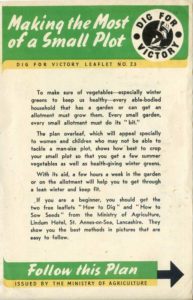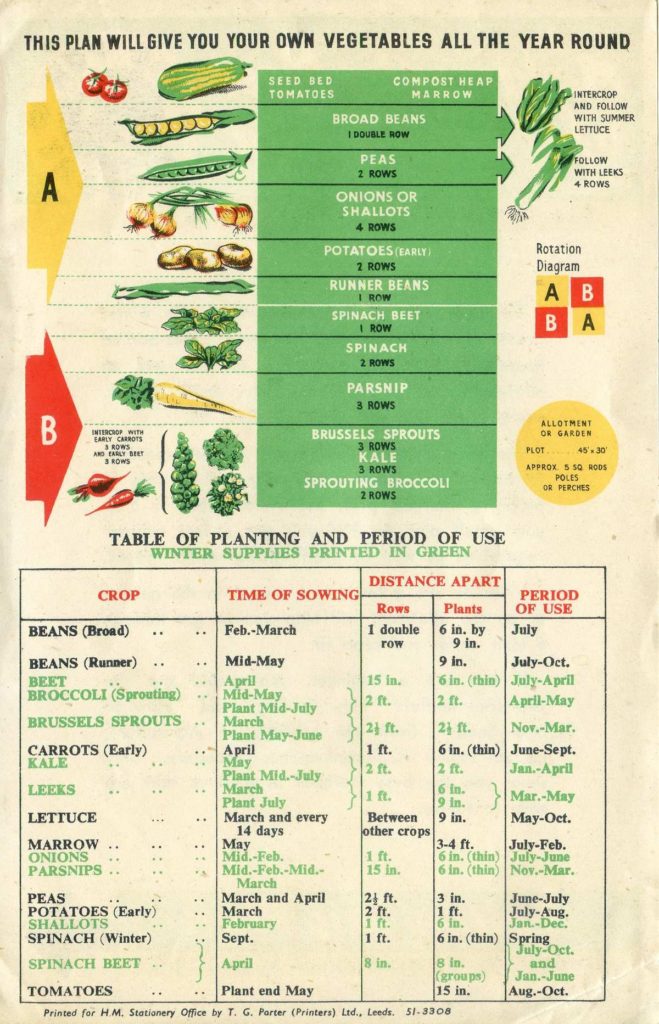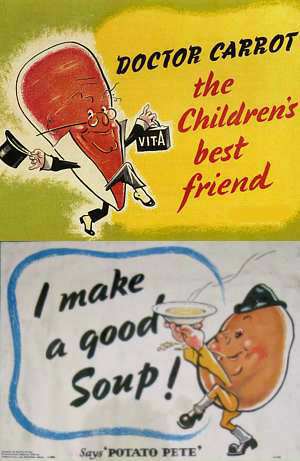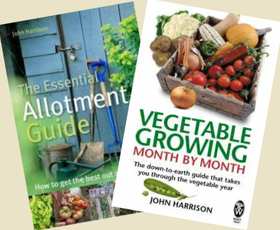 Making the Most of a Small Plot
Making the Most of a Small Plot
DIG FOR VICTORY LEAFLET N0.23
 To make sure of vegetables — especially winter greens to keep us healthy — every able-bodied household that has a garden or can get an allotment must grow them. Every small garden, every small allotment must do its “bit.”
To make sure of vegetables — especially winter greens to keep us healthy — every able-bodied household that has a garden or can get an allotment must grow them. Every small garden, every small allotment must do its “bit.”
The plan overleaf, which will appeal specially to women and children who may not be able to tackle a man-size plot, shows how best to crop your small plot so that you get a few summer vegetables as well as health-giving winter greens.
With its aid, a few hours a week in the garden or on the allotment will help you to get through a lean winter and keep fit.
If you are a beginner, you should get the two free leaflets ” How to Dig ” and ” How to Sow Seeds ” from the Ministry of Agriculture, Lindum Hotel, St. Annes-on-Sea, Lancashire. They show you the best methods in pictures that are easy to follow.
Obviously not everyone had access to a standard 10 rod plot (250 square yards) or the time and energy to handle it. Although a standard pre-war semi-detached house would probably have a garden some 90 feet long by 30 feet wide – enough for a 10 rod plot with a bit left over for a lawn and an Anderson shelter, many city properties – particularly in London – would not.
This plan for half size plot would certainly maximise production and make a fair contribution to a families food needs. It makes good use of inter-cropping and follow on crops but has one major flaw.
The 3 year rotation is reduced to a 2 year rotation which makes the likelihood of disease and pest build-up higher. I doubt it would be sustainable long-term, but in those wartime years it was more a matter of getting through to next year rather than the next decade.
I would have thought it possible to run a three year rotation on a 5 rod plot but I suppose simplicity was important. They were aiming these dig for victory guides at new growers – often people who hadn’t grown anything beyond a pot plant. Hence the guidance to obtain the ” How to Dig ” and ” How to Sow Seeds ” guides




